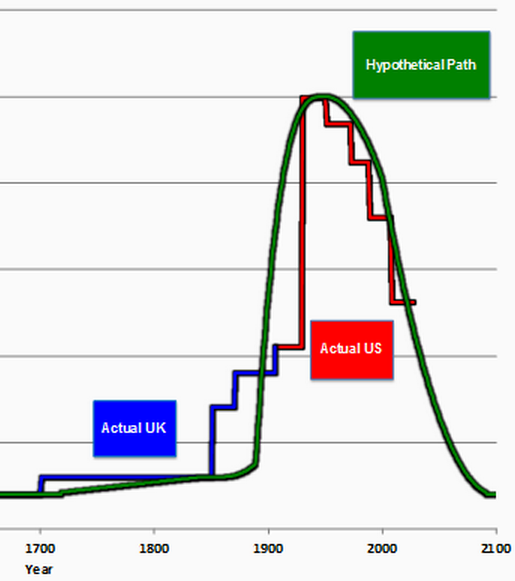 Nobel-prize winning neuroscientist Rita Levi-Montalcini has passed away at the age of 103, just a few months after publishing her last scientific study. Nobel-prize winning neuroscientist Rita Levi-Montalcini has passed away at the age of 103, just a few months after publishing her last scientific study.
She won the Nobel Prize for the discovery of nerve growth factoralong with her colleague Stanley Cohen and continued worked well past the time when most people would have retired.
Her most recent scientific study was published earlier this year, at the age of 102, and extended the work for which she won the Nobel.
If you want more background on a fantastic neuroscientist and her ground-breaking work, Nature published a profile in 2009, on her 100th birthday.
|
This Blog AMICOR is a communication instrument of a group of friends primarily interested in health promotion, with a focus on cardiovascular diseases prevention. To contact send a message to achutti@gmail.com http://achutti.blogspot.com
Monday, December 31, 2012
Rita Levi-Montalcini 102 Died
Verbal Autopsy
by MICHAELEEN DOUCLEFF
An autopsy helps medical students learn human anatomy in Rembrandt's painting The Anatomy Lesson of Dr. Nicolaes Tulp from 1632.
One of the few times we hear about autopsies these days is when a celebrity dies. But post-mortem investigations do more than satisfy our curiosity about Whitney Houston or Notorious B.I.G.
Autopsies tell communities why people are dying./.../
Sunday, December 30, 2012
2582 - AMICOR 15 - FELIZ ANO NOVO!
The Wishing Tree

The Strange Story of William Faulkner’s Only Children’s Book*by Maria Popova * *A rare vintage treasure, with stunning black-and-white illustrations and a side of controversy.* As a lover of obscure children’s books by famous authors of grown-up literature, I was delighted to discover *The Wishing Tree* (*UK*; *public library*) by none other than *William Faulkner* — a sort of grimly whimsical morality tale, somewhere between *Alice In Wonderland*, *Don Quixote*, and*To Kill a Mockingbird*, about a girl who embarks upon a strange adventure on her birthday only to realize the importan... mais »
Futurologia

You Tomorrow [Kindle Edition] author Ian Pearson [image: You_Tomorrow] If you wonder what your life tomorrow will bring, this is the book for you. It discusses how your everyday life will change over the next few decades. First it covers the various stages of life, from pre-birth genetic design of your offspring all the way through to death and potential immortality. Along the way … more…
Culture

Found in Translation: How Language Shapes Our Lives and Transforms the WorldDecember 26, 2012 Author: Nataly Kelly, Jost ZetzschePublisher: Perigee Trade (10/2/2012) *[+]*Translation affects every aspect of your life – and we’re not just talking about the obvious things, like world politics and global business. Translation affects you personally, too. The books you read. The movies you watch. The food you eat. Your favorite sports team. The opinions you hold dear. The religion you practice. Even your looks and, yes, your love life. Right this very minute, translation is saving lives, ... mais »
Google Zeitgeist 2012

[image: zeitgeist2012] Google Zeitgeist 2012: Year In Review
New Nano-scale window

A high-resolution nanoscale window to the live biological worldDecember 27, 2012 [image: vtech_nanoscale_window] A novel microfluidics platform allowed viewing of structural details of rotavirus double-layered particles; the 3-D graphic of the virus, in purple, was reconstructed from data gathered by the new technique and is ~80 nm. in diameter (credit: Virginia Tech) Investigators at the Virginia Tech Carilion Research Institute haveinvented a way to directly image biological structures at nanometer-resolution in their natural habitats (a liquid environment). The technique is a majo...mais »
Social media: 2013

Social media: Five predictions for 2013 The big players got bigger in 2012, and they show no sign of slowing down. But Twitter, Facebook, and Instagram have company. Just don't bet on MySpace ever being an important player again. [image: Daniel Terdiman] by Daniel Terdiman December 28, 2012 12:01 AM PST (Credit: Illustration by James Martin/CNET) When you think of social media these days, you probably think primarily of Facebook and Twitter, and perhaps Instagram. But while those services have massive -- and growing -- user bases, they're of course not the only games in town./.../
Current industrial revolution

Is growth over?December 28, 2012 Growth in real GDP per capita, with actual (from .2 to 2.5 percent per year) and hypothetical paths (credit: Robert J. Gordon) Global growth from the current industrial revolution (computers, the web, mobile phones) is slowing — especially in advanced-technology economies, and long-term economic growth may grind to a halt, Robert J. Gordon, Stanley G. Harris Professor in the Social Sciences and Professor of Economics at Northwestern University, has argued. Now economist Paul Krugman counters in *The New York Times*that we are moving toward a world in ... mais »
DSM-5

A depressing financial justificationby vaughanbell [image: Image from Wikipedia user LuciusCommons. Click for source.]One of the most controversial changes to the recently finalised DSM-5 diagnostic manual was the removal of the 'bereavement exclusion' from the diagnosis of depression - meaning that someone could be diagnosed as depressed even if they've just lost a loved on *The Washington Post* has been investigating the financial ties of those on the committee and, yes, you guessed it:/.../
Psychology of judgment and decision-making

[image: File:Daniel KAHNEMAN.jpg] *Daniel Kahneman *(Hebrew: דניאל כהנמן) (born March 5, 1934) is an Israeli American psychologist and winner of the 2002 Nobel Memorial Prize in Economic Sciences. He is notable for his work on the psychology of judgment and decision-making, behavioral economics and hedonic psychology. With Amos Tversky and others, Kahneman established a cognitive basis for common human errors using heuristics and biases (Kahneman & Tversky, 1973; Kahneman, Slovic & Tversky, 1982; Tversky & Kahneman, 1974), and developed prospect theory (Kahneman & Tversky, 1979). He ... mais »
Opinion Art 2012

SLIDE SHOWNotable Opinion Art of 2012 A selection of illustrations that reflects on the issues of 2012 using exemplary wit, incisiveness, beauty and provocation. Notable Opinion Art of 2012Published: December 29, 2012 Multimedia Slide Show Notable Opinion Art from 2012 The New York Times opinion section commissions at least 30 original illustrations each week, more than 1,500 each year. Our tradition of using art to bring an incisive, witty or provocative perspective on current affairs dates to the creation of the Op-Ed page in 1970, and expanded with the creation of the Sunday Revie... mais »
The Lives of 2012 died personalities

MAGAZINE The Lives They Lived A celebration of the writers, thinkers, athletes, scientists and others who died in 2012.
Colégio Santíssima Trindade

Curso secundário e Normal da Dra. Valderês De 1943 a 1950 Valderês Antonietta Robinson, depois de Casada também Achutti, estudou em Cruz Alta no RS, no Colégio Santíssima Trindade. Encontro de três colegas, no dia 17 de dezembro de 2012, em Porto Alegre, no apartamento de uma delas Lúcia Westphallen Etchegoyen. Aparecem na foto a partir da esquerda: Inalda da Costa Villas-Boas, Lúcia, Enice Zazeron e Valderês. Izar Aparecida de Moraes (casada) Xausa, também ex-colega visitando Valderês no dia 29/12/2012
Dementia: Nondrug Management

Medscape Medical News > Neurology 6 Steps to Nondrug Management of Dementia Pauline Anderson Dec 27, 2012 Editors' Recommendations - New Guidelines on Screening for Cognitive Impairment - Amyloid Tracer Clinically Useful in Cognitive Impairment - Alzheimer's Disease News & Perspectives Drug & Reference Information - Delirium, Dementia, and Amnesia in Emergency Medicine - EEG in Dementia and Encephalopathy - Alzheimer Disease in Down Syndrome From existing evidence and their own clinical experience, researchers at Johns Hopkins University have come up with 6 nonpharma... mais »
Why Music Moves

Understanding Why Music Moves Us By Maia SzalavitzDec. 24, 20120NICHOLAS MONU / GETTY IMAGES [image: 85577665a] According to a study published in the *Proceedings of the National Academy of Sciences*, music and dance share a parallel expression of emotion. The new research suggests that the two disciplines can express a mood together, with complementary methods of generating the dynamics of feeling.They say that writing about music is like dancing about architecture. But why don’t we dance to paintings— or for that matter, buildings— anyway? The latest research hints at why. The in... mais »
Silhouettes 2012

*2012: The Year in Silhouettes* JanuaryFebruaryMarchAprilMayJuneJulyAugustSeptemberOctoberNovemberDecember 12345678910111213141516171819202122232425262728293031 Ebrahim Noroozo—AFP/Getty Images Jan. 1, 2012. Iranian navy conducts the "Velayat-90" naval wargames in the Strait of Hormuz in southern Iran. [image: Click here to find out more!]Prior to the invention of photography in the mid-19th century, the silhouette was considered an effective and inexpensive way to record a person’s likeness or capture a scene. Although the practice can be traced back to the early 17th century, the ... mais »
The Wishing Tree
The Strange Story of William Faulkner’s Only Children’s Book
by Maria Popova
A rare vintage treasure, with stunning black-and-white illustrations and a side of controversy.
 As a lover of obscure children’s books by famous authors of grown-up literature, I was delighted to discover The Wishing Tree (UK; public library) by none other than William Faulkner — a sort of grimly whimsical morality tale, somewhere between Alice In Wonderland, Don Quixote, andTo Kill a Mockingbird, about a girl who embarks upon a strange adventure on her birthday only to realize the importance of choosing one’s wishes with consideration and kindness.
As a lover of obscure children’s books by famous authors of grown-up literature, I was delighted to discover The Wishing Tree (UK; public library) by none other than William Faulkner — a sort of grimly whimsical morality tale, somewhere between Alice In Wonderland, Don Quixote, andTo Kill a Mockingbird, about a girl who embarks upon a strange adventure on her birthday only to realize the importance of choosing one’s wishes with consideration and kindness.
But far more intriguing than the mere existence of the book is the bizarre story of how it came to be: In 1927, Faulkner gave the story to Victoria “Cho-Cho” Franklin, the daughter of his childhood sweetheart, Estelle Oldham, with whom he was still in love. He hoped Estelle would leave her unhappy marriage and marry him instead — which she did two years later.
"…if you are kind to helpless things, you don’t need a Wishing Tree to make things come true. "/.../
Futurologia
You Tomorrow [Kindle Edition]
| author Ian Pearson |
 | If you wonder what your life tomorrow will bring, this is the book for you. It discusses how your everyday life will change over the next few decades. First it covers the various stages of life, from pre-birth genetic design of your offspring all the way through to death and potential immortality. Along the way … more… |
Culture
- Author:
- Nataly Kelly, Jost Zetzsche
- Publisher:
- Perigee Trade (10/2/2012)
[+] Translation affects every aspect of your life – and we’re not just talking about the obvious things, like world politics and global business.
Translation affects every aspect of your life – and we’re not just talking about the obvious things, like world politics and global business.
 Translation affects every aspect of your life – and we’re not just talking about the obvious things, like world politics and global business.
Translation affects every aspect of your life – and we’re not just talking about the obvious things, like world politics and global business.
Translation affects you personally, too. The books you read. The movies you watch. The food you eat. Your favorite sports team. The opinions you hold dear. The religion you practice. Even your looks and, yes, your love life. Right this very minute, translation is saving lives, perhaps even yours.
Translation influences everything from holy books to hurricane warnings, poetry to Pap smears. It’s needed by both the masses and the millionaires. Translation converts the words of dictators and diplomats, princes and pop stars, bus drivers and baseball players. Translation fuels the global economy, prevents wars, and stops the outbreak of disease. From tummy tucks to terrorist threats, it’s everywhere.
This book will help you see how the products you use, the freedoms you enjoy, and the pleasures in which you partake are made possible by translation.
Topics: Cognitive Science/Neuroscience | Social Networking/Web/Education
nanoscale window
A high-resolution nanoscale window to the live biological world
December 27, 2012

A novel microfluidics platform allowed viewing of structural details of rotavirus double-layered particles; the 3-D graphic of the virus, in purple, was reconstructed from data gathered by the new technique and is ~80 nm. in diameter (credit: Virginia Tech)
Investigators at the Virginia Tech Carilion Research Institute haveinvented a way to directly image biological structures at nanometer-resolution in their natural habitats (a liquid environment).
The technique is a major advancement toward the ultimate goal of imaging biological processes in action at the atomic level.
The technique uses two silicon-nitride microchips with windows etched in their centers and pressing them together until only a 150-nanometer space between them remains.
The researchers then fill this pocket with a liquid resembling the natural environment of the biological structure to be imaged, creating a microfluidic chamber.
Then, because the movement of free-floating structures yield images with poor resolution, the researchers coat the microchip’s interior surface with a layer of natural biological tethers, such as antibodies, which naturally grab onto a virus and hold it in place./.../
Social media: 2013
Social media: Five predictions for 2013
The big players got bigger in 2012, and they show no sign of slowing down. But Twitter, Facebook, and Instagram have company. Just don't bet on MySpace ever being an important player again.
 (Credit: Illustration by James Martin/CNET)
(Credit: Illustration by James Martin/CNET)
When you think of social media these days, you probably think primarily of Facebook and Twitter, and perhaps Instagram. But while those services have massive -- and growing -- user bases, they're of course not the only games in town./.../
Current industrial revolution
Is growth over?
December 28, 2012

Growth in real GDP per capita, with actual (from .2 to 2.5 percent per year) and hypothetical paths (credit: Robert J. Gordon)
Global growth from the current industrial revolution (computers, the web, mobile phones) is slowing — especially in advanced-technology economies, and long-term economic growth may grind to a halt, Robert J. Gordon, Stanley G. Harris Professor in the Social Sciences and Professor of Economics at Northwestern University, has argued.
Now economist Paul Krugman counters in The New York Timesthat we are moving toward a world in which “Big Data — the use of huge databases of things like spoken conversations — apparently makes it possible for machines to perform tasks that even a few years ago were really only possible for people.
“Speech recognition is still imperfect, but vastly better than it was and improving rapidly, not because we’ve managed to emulate human understanding but because we’ve found data-intensive ways of interpreting speech in a very non-human way.”
However, he warns, while smart machines may make higher GDP possible, “they also reduce the demand for people — including smart people. So we could be looking at a society that grows ever richer, but in which all the gains in wealth accrue to whoever owns the robots.”
Interestingly, neither economist considers the effects of future exponential growth of hardware and software computation (and other tools) and the technological Singularity. — Ed.
Topics: Computers/Infotech/UI | Innovation/Entrepreneurship | Singularity/Futures
DSM-5
 One of the most controversial changes to the recently finalised DSM-5 diagnostic manual was the removal of the 'bereavement exclusion' from the diagnosis of depression - meaning that someone could be diagnosed as depressed even if they've just lost a loved on One of the most controversial changes to the recently finalised DSM-5 diagnostic manual was the removal of the 'bereavement exclusion' from the diagnosis of depression - meaning that someone could be diagnosed as depressed even if they've just lost a loved on
The Washington Post has been investigating the financial ties of those on the committee and, yes, you guessed it:/.../
|
Psychology of judgment and decision-making

Daniel Kahneman (Hebrew: דניאל כהנמן) (born March 5, 1934) is an Israeli American psychologist and winner of the 2002 Nobel Memorial Prize in Economic Sciences. He is notable for his work on the psychology of judgment and decision-making, behavioral economics and hedonic psychology.
With Amos Tversky and others, Kahneman established a cognitive basis for common human errors using heuristics and biases (Kahneman & Tversky, 1973; Kahneman, Slovic & Tversky, 1982; Tversky & Kahneman, 1974), and developed prospect theory (Kahneman & Tversky, 1979). He was awarded the 2002 Nobel Memorial Prize in Economics for his work in prospect theory.
In 2011, he was named by Foreign Policy magazine to its list of top global thinkers.[1] In the same year, his book Thinking, Fast and Slow, which summarizes much of his research, was published and became a best seller.
Currently, he is professor emeritus of psychology and public affairs at Princeton University's Woodrow Wilson School. Kahneman is a founding partner of The Greatest Good, a business and philanthropy consulting company. He is married to Royal Society Fellow Anne Treisman.[2]/.../
Opinion Art 2012
SLIDE SHOW
Notable Opinion Art of 2012
A selection of illustrations that reflects on the issues of 2012 using exemplary wit, incisiveness, beauty and provocation.
Notable Opinion Art of 2012
Published: December 29, 2012
Multimedia
The New York Times opinion section commissions at least 30 original illustrations each week, more than 1,500 each year. Our tradition of using art to bring an incisive, witty or provocative perspective on current affairs dates to the creation of the Op-Ed page in 1970, and expanded with the creation of the Sunday Review section (formerly the Week in Review) in 2011. Here is a sampling of illustrations from the past year.
The Lives of 2012 died personalities
MAGAZINE

The Lives They Lived
A celebration of the writers, thinkers, athletes, scientists and others who died in 2012.
Friday, December 28, 2012
Dementia: Nondrug Management
Editors' Recommendations
Drug & Reference Information
From existing evidence and their own clinical experience, researchers at Johns Hopkins University have come up with 6 nonpharmacologic steps to better identify and manage behavioral problems in patients with dementia.
Behavioral issues, which can include psychiatric symptoms such as depression, psychosis, apathy, agitation, aggression, delusions, and hallucinations, as well as troubling conduct such as repetitive vocalizations and wandering, are frequently difficult to manage and can both increase the risk for dangerous activities (walking out in traffic, for example) and be hugely stressful for caregivers. Physicians sometimes prescribe atypical antipsychotics to manage difficult behavioral symptoms.
Six nondrug approaches to identifying and managing behavioral problems are summed up in an article by Laura N. Gitlin, PhD, from the Department of Community Public Health, School of Nursing, Johns Hopkins University, Baltimore, Maryland, and colleagues. The article was published in the November 21 issue of JAMA.
6 Steps/.../
 Share
Share Email
Email Print
Print

